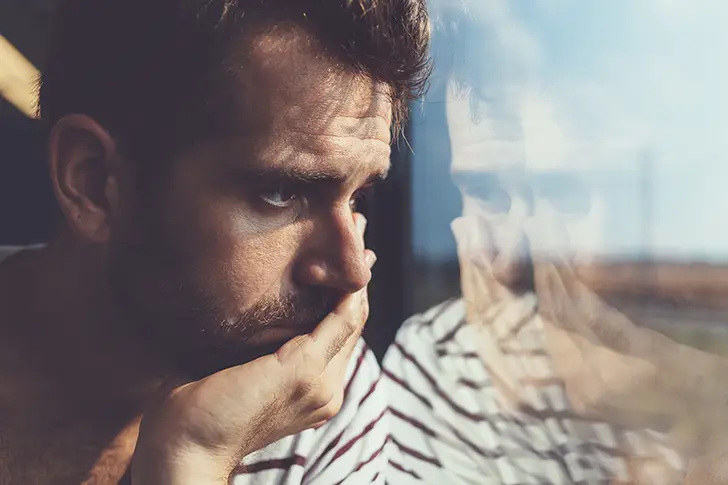The Paradox of Progress and Depression
A paradox of modern life is plummeting global poverty matched almost perfectly with rising depression. Like never before we can defeat diseases, survive childbirth, elude predators, and escape violence, yet we have never been so unhappy, so depressed.
How can this be?
Understanding the Nature of Depression
Depression is a kind of sadness gone rogue, “a nausea of the cells and soul”[1] that strips the senses of all life and colour, stifles positive thought, and stymies helpful action. A response to life’s problems that becomes a problem in itself, depression makes solving those problems even harder than before.
Maslow’s Hierarchy and the Modern Pursuit of Happiness
One reason for our predicament is Maslow’s Hierarchy of Needs, a pyramid of human motivation from basic survival, through safety, to self-actualisation. Since moving towards a goal releases dopamine – the fuel of positive emotion – happiness is tied to purpose.
When we have nothing, goals are crystal clear: get food, get safety. But with those achieved, we move into the rarefied air at the pyramid’s peak where purpose is more complex and abstract. Safe and well-fed, we seek identity and meaning, and happiness becomes maddeningly elusive.
Robbed of tangible purpose and easy dopamine, we become easy prey for melancholy. “So we beat on, boats against the current…”, borne ceaselessly into despair.
The Mystery of Mental Evolution
Maslow can’t be blamed; he merely described what lies within. Precisely why our mental architecture colludes against happiness is a cruel enigma of evolution.
The depressed person cannot seek food, shelter or mates; they cannot fight or take flight; they cannot reproduce; they can barely survive.
Imagine a similar condition among birds called Heavy Feather Syndrome, dragging the afflicted from the sky and keeping them grounded for weeks, months or years. Natural selection would rapidly whittle HFS down below 1% or extinguish it entirely, either that or the whole species. Evolution simply won’t suffer such a flaw to live.
So why would life evolve something so counterproductive in humans, then let it persist at 10% or more?
Comparing Depression Across Species
A vital clue comes from curiously depression-like responses among animals. A male lion who loses a duel, for example, will slink away and hide, losing energy and appetite, showing little interest in further fights or potential mates.
The lion is behaving like someone depressed – and it works. If he leapt back into the fray immediately, another defeat and possibly death would follow. But by hiding away he can recover and regather his strength, and soon he will be ready to pounce once more. The lion’s behaviour is like an extended flight response. In classic fight or flight, the pupils dilate, the heart races, blood pressure goes up: the body gears up for rapid and vigorous action.
This is an excellent idea if there is a fight to win or a danger to flee, but for an animal trapped, wounded, or outmatched, ramping up for action only makes things worse. Vital energy is expended and injuries exacerbated.
In situations where an animal faces a serious downturn with no active way to respond, such as by losing its mate or a contest, the best solution is to withdraw, to play it safe – like a defeated lion licking its wounds, or a lobster slinking away in submission. These withdrawal responses are universal in the animal kingdom.
Is Depression a Safety Reflex in Humans?
Could human depression be this kind of safety reflex?
Depressed humans also shut down and withdraw. They stay in bed, don’t socialise, don’t take risks; they lose their interest in sex and food. All behaviour dials down to zero.
When it comes to all the beneficial but risky activity of normal life, a depressed person just doesn’t feel like it, doesn’t see the point.
At a cellular level, a chemical cascade of neurotransmitters, receptors, genes, and hormones has switched on with exquisite precision, all seeming to aim at the singular purpose of psychic pain. Ruminations about past experiences and present problems rise up, equally unbidden.
The result is not the devastation of a foreign invader, like HIV or Ebola, or the chaos of internal revolt, like anaphylaxis or cancer; the cellular unfolding of depression seems all too smooth and orchestrated, as if built-in, almost as if planned. Happy people may all be alike, but each depressed person is depressed in the same way – and here lies a vital clue.
A lack of interest and energy, a loss of confidence, and the presence of mental pain all collude to make a person hide away, alone with their thoughts: a withdrawal response that at least forestalls further damage and forces assessment of what went wrong. From an evolutionary view, the response starts to appear not so pointless after all.
Depression’s Biological Origins
If depression is the same safety response of other animals, there should be biological parallels, and this is precisely what researchers are discovering.
The same serotonin 1A receptor involved in human depression is 99% identical in rats, while similar depressive responses appear as far down the evolutionary chain as crustaceans. A lobster with high serotonin responds to a nudge with a fight posture, but a low-serotonin lobster submits. If this timid lobster is treated with serotonin (the chemical boosted by antidepressants), suddenly he will fight with anyone.
Since lobsters separated from our ancestral line 500 million years ago, it seems that the depression response was built-in to our nature well before we even had frontal lobes to experience it.
But why is it still with us?
Withdrawal and submission responses in animals appear to be triggered by threats where fight or flight is impossible or pointless – and the conditions that lead to human depression are strikingly similar. Situations that provoke a sense of entrapment, humiliation or loss are especially potent, and some experiences, such as being sacked or cheated on, deliver all three in one convenient bundle.
Most of the time our instincts seeking food, company, or pleasure are beneficial, but in times of weakness and vulnerability our natural drive towards action may be pointless or even harmful. Many of life’s problems come with an active response – hunger seeks food, fear produces flight, injustice sparks anger – but if we are trapped, defeated or grieving, there may be nowhere to flee, nothing to attack, and no-one to blame.
When we are powerless, and active options are equally horrible or absent entirely, inaction can conserve resources and prevent a rash response from making matters worse. Here the neural cascade of depression forces us to bunker down, to face no threat and seek no opportunity.
When the chaos of life is overwhelming, we return to the safety of order, watching the TV show, eating the same food, staring at the same wall.
The ancient structure of our mind registers a state of weakness, so it forces us to shut down and withdraw. Without depression draining every action of its lustre, who knows what kamikaze reply an addled mind might come up with.
Sun Tzu counselled the same: attack when strong; defend when weak.
But what turns a helpful adaptation in animals into a debilitating disease in humans? Why is it that a lion can rebound into the fray after a week, but a human may be paralysed by crushing melancholy for years?
Animals may withdraw and hide away, but it seems that burden of clinical depression falls to humans alone.
The answer to this existential irony may well be the irony of existence itself: humans alone have self-consciousness, and it is here that clinical depression takes hold. Animals act by instinct, and so do humans, but we also have the intermediary of consciousness, and with it the ability to decide.
To get a human to act a certain way consistently, evolution uses powerful drives such as hunger, lust and curiosity. When it is best to withdraw, these drives shut down just as they do in animals, but what if consciousness lodges a protest and wants to act anyway?
A man stuck in a terrible job with no money, facing daily humiliation and an awful boss, seeing others enjoying riches and freedoms entirely beyond reach, will have anger circuits humming at high pitch. Consciousness may choose to embrace their counsel and surge into futile and destructive action. The man may tip over his desk, punch the boss, and storm out into a new life.
Sometimes consciousness chooses aggressive action, and sometimes this turns out well – but our genes have learnt over aeons that the safer bet is withdrawal, especially when outmatched. The oppressor may be a stronger rival, society itself, even an indifferent universe. It can neither be defeated nor escaped, so the man becomes depressed instead. The depression seeps into his self-image, which makes him seem even more outmatched that he is.
The ancient response of depression has been let loose into consciousness, and this is where it becomes the most potent oppressor of all. But evolution really had no choice. Our frontal lobes often choose to act against the protests of fear, fatigue, or hunger to seek a higher goal. To produce a true withdrawal response, evolution had to find a way to neutralise our conscious drives also.
Depression: An Evolutionary Strategy Overturned by Consciousness
A complete behavioural shutdown demands a full 180 from our usual thoughts and feelings, and the experience of this is clinical depression. Unsurprisingly the thoughts and feelings involved are horrible: loss of energy, appetite and pleasure; worry and dread; the inability to act or make decisions; aversion to other people, and thoughts of helplessness, futility and doom.
These are ‘symptoms’ but also a mind-body reflex forcing a person to retreat and conserve resources. From this view, depression is the brain’s fail-safe to whisk you away from the arena of competition to avert further damage.
The reason why depression is a helpful reflex in animals but a painful burden in people, and the difference is the peculiar quality of consciousness.
The Unique Suffering of Humans
Our species has evolved so successfully that we have won for ourselves a unique arena for suffering. Our civilisation has made us so invulnerable to external threats that we have fallen prey to internal ones.
Patients in intense care often die not from the infection or injury, but the body’s defences running amok, spiralling the blood pressure, and shredding the vessels.
Now the immune system is the enemy, like a palace guard in revolt. So too after the depression reflex was granted the power of consciousness. With consciousness comes another specifically human pitfall: suicide.
Depression, Suicide, and Consciousness
Humans may find depression so intolerable that they choose the only way to definitively escape it, which seems to work entirely against any evolutionary benefit. Yet the link between suicide and depression is murky, not least because suicidal thinking usually grants the diagnosis automatically.[2] Nevertheless, 40% of people who suicide had no diagnosis of depression,[3] and those who did were not necessarily depressed at the time.
Psychiatrists know that the real danger period for suicide is after starting treatment, when the patient seems to be improving. Similarly, a patient who decides to suicide often feels immediately better, likely because seeing an escape lifts the sense of being trapped and helpless.
Meanwhile in the throes of depression, a person often simply cannot muster the energy or resolve to kill themselves. And there may lie the paradoxical benefit that evolution has preserved. As any sufferer knows too well, however, depression usually far exceeds any strategic retreat.
The Lingering Curse of Human Depression
Animal depression ends once the trigger departs, but in humans it stays for weeks, months, even years, often becoming more damaging than whatever caused it.
The human curse is again the fact of consciousness. Since we experience all the painful thoughts and feelings that accompany the withdrawal response, these moments linger in memory or lodge in our identity to act as depressive triggers in their own right. Being depressed is depressing, and thus begins a vicious circle.
Animals lack this niche of consciousness where depression can take root. Triggers for their withdrawal are all external, so when food returns, the predator wanders away, or wounds are healed, the reflex switches off, and the animal bounds back into action.
Consciousness: The Double-Edged Sword
The trigger for human depression may also vanish, but by then it has often replicated internally, its dark tendrils sliding into memory and perception. The switch stays on.
Say a man is fired. The loss, humiliation, and helplessness, along with the threat of an unknown future all trigger a depressive response. Initially, it is helpful to stay home, rest, and reflect about what went wrong.
So far this is as self-protective as a lion’s withdrawal after a defeat. But what happens next is distinctly human. The loss and humiliation lodges in his mind. He loses confidence. He has an image of who he was and what he had, he looks around at his changed life and becomes painfully aware that it has gone.
That awareness of our own misery (litost in Czech) is the unique human feature that gives depression an internal power source just as vivid and real as the external world – and it does not shut off easily. As depression kicks in, he becomes isolated, activities dwindle, and the dark hue his perception casts upon the world makes his former life seem so far away, and fading fast. The humiliation deepens, the walls close in, and grief accelerates. His darkened view becomes a self-fulfilling prophecy as he loses friends and alienates his wife.
Now things are truly spiralling, and a helpful reflex has become a disease. Depression is the curse that comes with our evolutionary success.
The Persistent Power of Modern Depression
For individuals, depression is the shadow that falls upon gifts of intelligence and empathy, for societies, the sting that comes with wealth, progress, and freedom. In the world where our ancestors evolved, the conditions prompting the depressive reflex (famine, winter, defeat) tended to be temporary, so depression would switch off and life could resume. But the depressive triggers of modern life are subtle and harder to escape.
Contrary to popular belief, depression usually comes not from a large, single event (like a car crash) but more subtle, enduring influences over time (like loneliness). The singular event only causes depression when it seeps into a person’s self-image and endures.
Eventually, depression can run purely on its own power, persisting even when its causes have passed, just as the immune system can turn against the very thing it evolved to protect. Asthma, allergies, or arthritis are examples of defences going beyond their mandate, and depression is the mental equivalent.
Depression a helpful natural response left on too long and therefore gone rogue, made possible by the unique quality of consciousness, where it takes hold.
References
- David Foster Wallace, Infinite Jest
- American Psychiatric Association. (2013). Diagnostic and statistical manual of mental disorders (5th ed.). Washington, DC.
- Ng CW, How CH, Ng YP. Depression in primary care: assessing suicide risk. Singapore Med J. 2017;58(2):72-77. doi:10.11622/smedj.2017006







